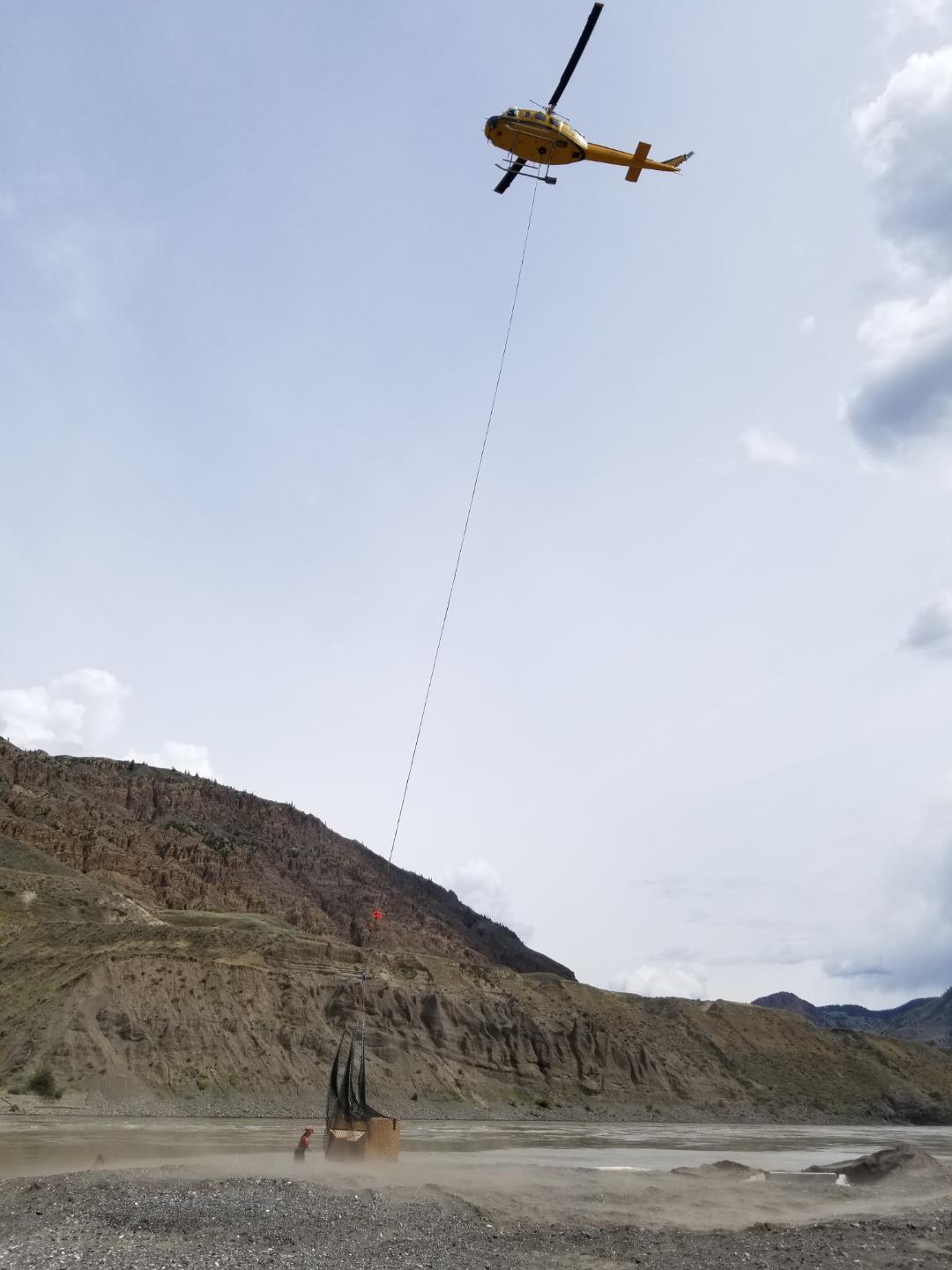The B.C. government says helicopters will be used to fly thousands of salmon to their spawning grounds upstream on the Fraser River to avoid a rock slide.

The slide, which came down a month ago northwest of Kamloops in a remote area, created a five-metre waterfall that’s preventing many fish from swimming upstream to spawn.
Provincial and federal officials have been working to find a solution ever since to help the sockeye and chinook salmon, many of which are already considered to be at risk.
WATCH: (Aired July 4) Rockslide causing concern for the future of salmon stock

In an update posted Saturday, the province and Fisheries and Oceans Canada said an off-channel holding pond is being built below the rock slide.
Once built, the salmon will swim through a one-way gate into the pond where they’ll be netted, tagged and placed in oxygenated aluminum tanks.

Get daily National news
Those tanks will then be flown by helicopter upstream of the slide, where the fish will be released back into the river.
The province said in a statement the operation is “one of many options that experts are implementing with the aim of helping the fish bypass the partial blockage.”
Fisheries personnel are also tagging fish in the Fraser to determine how many are making their way through the rapids caused by the waterfall on their own.
At the same time, the province said progress is being made on removing the rock and debris that came down during the slide, which was first reported between June 21 and June 23.
That work, which includes blasting a larger piece of overhanging rock from the slide face, will help prevent a future landslide from occurring, officials said.
Water levels are also beginning to subside after floodwaters began to creep into the river July 5 due to rising temperatures in the area.
The overall water temperature in the Fraser “has been trending downward,” the province said, which is beneficial to the health of the fish.
The provincial and federal governments made a joint commitment last week to do everything possible to make sure the millions of salmon are able to reach their spawning grounds.
Premier John Horgan recently briefed Prime Minister Justin Trudeau on the operation, the province said Friday.
— With files from the Canadian Press









Comments